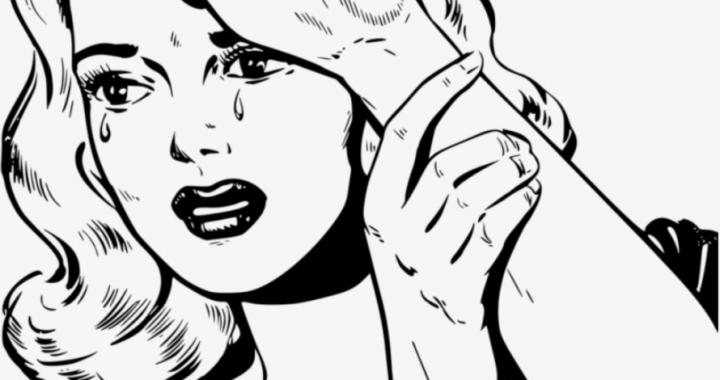Fun fact: the mascot at my university was a longhorn bull and our motto was “Hook ’em!” Sad fact: rarely do writers grow horns and hook their reader in the gut. In a sense that’s what Mr Ed’s book is all about: not so much throwing a line into the water and pulling out a fish of a reader. But more like my university taught us to do, which is become devilish and cause some problems. Sorry, I mean grow horns and hook ’em.
To anyone who’s read the book, I confess: I’m reading between the lines. Yet any conclusions I draw do come from the author’s sharp sense of craft, his piercing analysis of weak writing, a subtle antagonism rousing us to action. Like the wonderful expression, “to light a fire under someone’s ass,” the author wants to bull-fight us into stronger writers.
. . .
In today’s chapter, Mr Ed guides us through his list of items all beginnings must have. The first four are crucial. The last six only play a role to various degrees. Those items are the following:
- The inciting incident. This one is obvious, mentioned just about everywhere. What makes Mr Ed’s analysis interesting is that he reminds us that this opening event should be action. Not exposition, not backstory, just action. This section of the book made me think of the clapperboard on a movie set. The director, at the start of a filming, doesn’t call out “Character development!” nor does he shout “Setting!” What does the director call just before the clapperboard clicks? It’s what the inciting incident should be. ACTION!
- Story-worthy problem. If the inciting incident in Gone with the Wind is the Tarleton Twins announcing to Scarlett that Ashley will not be marrying her, what is the deeper psychological problem? What is just barely rearing its ugly head? Remember that Scarlett freezes, hides her vexation, stiffens her lip. With this one announcement the reader gets everything she needs regarding the story-worth problem: Scarlett’s slighted vanity, her fall to second place. The next 1000 pages are her dealing with this underlying problem. (Which becomes the South’s problem, no? After the Civil War . . .)
- The initial surface problem. Of course we do not know Scarlett so well in the beginning. Only that she thinks she loves Ashley and that her only concern is getting him to love her. The surface problem, in my mind, serves as the face of the underlying problem. Mr Ed says there can be other, later, larger surface problems, especially if this first one gets resolved during the course of the story. But sometimes, as it happens with Scarlett, it isn’t until the end of the book, when she finally gets her chance to be with Ashley that she realizes she never wanted him at all. The surface level problem is solved, but not the deeper one.
- The set-up. Just like a punch-line needs a set up, a story needs a couple of building blocks to be stacked in order to topple them over. If we want to tell the story of Oedipus Rex, we need to say that he was once the great king who broke the curse of the sphynx. Only then we can get to the surface problem of a new curse (crop failures), and then later to the story-worthy problem of self-fulfilling prophesies.
Pause. So these are the must-haves of story beginnings — the tires, engine, steering wheel, and car body of a book — the bare minimum. The next six, as previously mentioned, only have varying degrees of importance, depending on the kind of story you want to tell. Like cup holders, nitro gas, high safety ratings, etc. The reason I paused though was to share a reflection I have about the levels of surface-problem vs story-worthy problem. The pairing is a fairly intuitive way of dissecting what motivates a protagonist. In fact many of us can imagine a hero who thinks he wants one thing, but actually chases after something more.
What I want to say is I’m thinking there might even be a deeper, third level: the problem of problems. Is it so far-fetched to think? If we read all sorts of stories for roughly the same reason, then there must be something connecting all stories. I would argue that underneath the story-worthy problem of one protagonist lies the problem of all protagonist, that is of being human. We must be reminded every day and ever night, either around a camp fire, or on a zoom call with our boss, that we are capable of this. That we got this shit! And that’s why we read, watch, and listen to stories. Because there’s something wrong with us — sometimes just the false assumption that there is something wrong with us — which disappears when we imagine ourselves as our beloved heroes. In hearing stories, we learn to solve our problems.
Of course, just like Mr Ed warns writers not to blah-blah too much, rather to hint at the truth, then I think it’s very appropriate that the author didn’t state what I am stating now. If anything, he gave me the chance to come up with this reflection myself, had he thought of it before me. In any case, when you write, O squire, remember to leave some holes — even if subconsciously — for your reader to fill in with his imagination. Shall we continue?
5. Backstory. It’s appropriate for Mr Ed to make this the first of his six lesser important ingredients. Given how much amateurs focus on it. I know I did. Anyway, some stories benefit from backstory. For example if we’re opening a story with a husband socking his wife, most readers don’t need to know a jot more about that man to judge him. Sometimes, however, it might deepen the opening to know that this is the first time he has ever lay a hand on her. Or, conversely, that this is the third wife he has assaulted. Backstory may or may not be useful. So use cautiously.
6. Stellar first sentence. This is the cream de la cream of what Mr Ed wants to impart. That beginnings matter, and that first sentences matter the most of all the sentences. It’s curious he doesn’t say this is the most important element in beginnings, so he places it at number 6. Still, it is curious how he gives the first liner its due.
7. Language. Lord knows this is the basket wherein I used to put all my eggs. What I took from the language note in this book is that language can serve as a hook. Actually, any of these ten elements can serve as the hook. The beginning, should it have all ten of these, might contain ten fishing lines cast in the water. It’s this system of fishing that increases your chances of capturing the imagination of different kinds of readers. So yes, friends, bring us the flowers of lush spring, the brightest coral reefs, the sharpest of desert oases. It may serve to hook a poet like me. Or at the very least set the tone for the rest of the book.
8. Character. There can only be one protagonist per novel, claims the author. When I read that I was like what? So I googled, out of the blue, “Who is the protagonist of Thelma and Louise?” What did I find? A blog post by Mr Ed himself explaining how Thelma, not Louise, is the singular protagonist. “What about Game of Thrones?” Is there one protagonist? You could argue it’s two books in one, about fire and about ice. But just as easily you could argue the protagonist is either John or Daenerys, not both. I notice most love one or the other — that is they identity with one or the other. At the end of the day a protagonist is the one we identity with. And it’s a cold fact that we identity with only one person per story. Either yours truly. Our Beloved. Or God. But only ever one.
9. Setting. This is a must, and anyone would tell you. Because, as Julia Cameron put it, you should open with a few lines about where the action is talking place. It grounds the reader. It helps you get writing. Or like Mr Ed puts it, it’s what schools drill into our head, so we’re pretty much accustom to it. Remember, though, that this is number 9, so use accordingly. If your setting plays a critical role, then give it the proper page-space. But if the setting is just contemporary New York City? Then it’s enough to just say “It was on the southside of Union Square,” when you describe a piano falling on someone who was sprinting down the sidewalk with a snatched purse in hand.
10. Foreshadowing. The best description of foreshadow I ever heard was my editing professor Susan Bell say “At the end of a long hallway, it’s best to hang a picture. That way people have something to look at as they move forward.” The foreshadow, according to Mr Ed, gives the reader something to expect — even to expect as far ahead as the end of the book. The classic example is the snake in the Indiana Jones opening. There are millions. Basically you want to tease your audience, have them thinking, “Oh, I see what you are doing.” One of the best ways to end a story, even, is to go back to the beginning and to use a small detail as the spark of the idea of the end.
. . .
The chapter later goes on to describe the goals of openings. But you’ll just have to read the book to get that. For now, I’m off.




